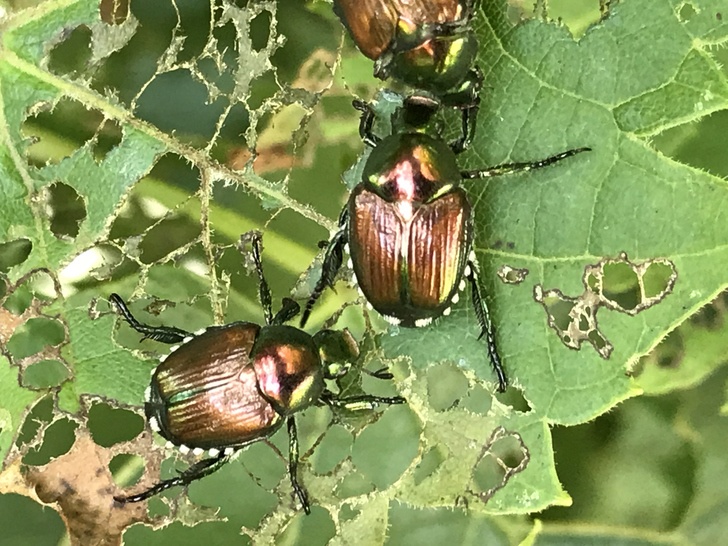
The first Japanese beetle found in America was discovered in New Jersey in 1916. Prior to this time, the beetle was only found in Japan where it is not a major pest. In 1937, beetles were discovered in Kentucky.
By the 1950’s and the 1960’s the population of beetles rose quickly and spread throughout Kentucky and into other states.
The eastern part of the US provides plenty of grass where grubs can live and numerous species of plants on which adults feed.
This, along with no real effective natural enemies makes this part of the country a perfect place for the Japanese beetle to thrive.
Over time, the beetle has expanded into Ontario, Minnesota, Iowa, Missouri and Arkansas and south to Georgia and Alabama.
If you are an avid gardener, it is likely that you have suffered some damage from Japanese beetles.
What Do Japanese Beetles Look Like?
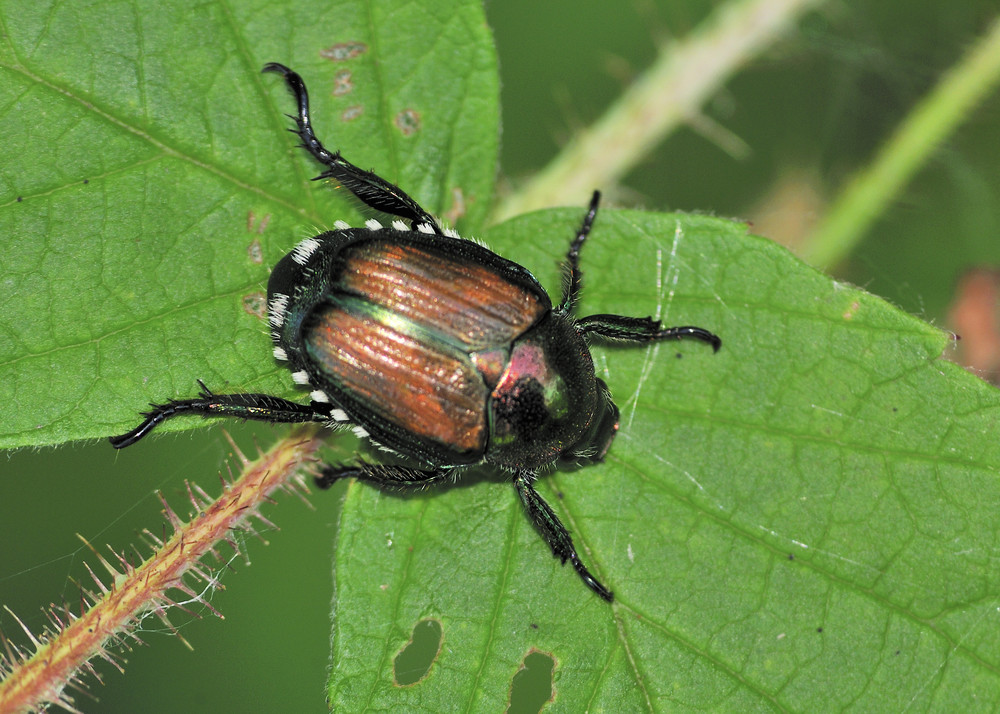
An adult Japanese beetle is about .6 inches long and .4 inches wide. They have a green metallic body and copper-brown wing covers.
They also have white spots of hair under their wing covers on each side of their body.
In June, adults come up from the ground and start eating. They do the most damages starting in late June for about 4 to 6 weeks. Beetles live for about 30 to 45 days.
There are over 300 types of plants that beetles will eat and can destroy leaves, flowers, and overripe or wounded fruit quickly. They feed in masses and start at the top of the plant, working their way downward.
Beetles feed most actively on days that are warm and sunny and will eat mostly plants in direct sunlight. Group feeding can result in serious plant damage.
Spotting Japanese Beetle Damage On Plants
If the upper surface of plant foliage appears lacelike or skeletonized in appearance, it is likely the work of Japanese beetles. This is because the adult beetles feed on the tissue between veins in leaves.
If you have roses, beetles can completely consume the petals and leaves.
The Life Cycle of Japanese Beetles
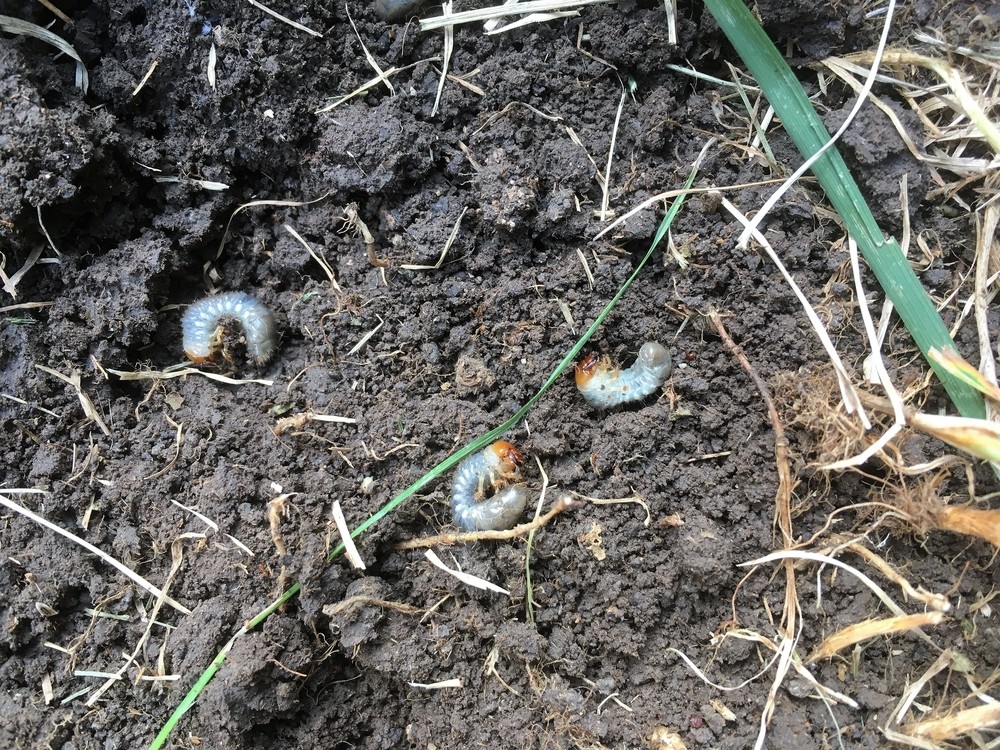
As soon as adults emerge from the ground they begin to lay eggs. Females lay eggs 2 to 3 inches in the ground and will lay a total of 40 to 60 eggs during their life.
Grubs spend 10 months in the ground and feed on roots of grass and vegetable seedlings.
Rains in mid-summer and soil moisture are needed to keep eggs and grubs for dehydrating. This is part of the reason why you will find females laying eggs in moist areas such as irrigated lawns and golf courses.
The beetles can stand heavy rain and excessive moisture.
Spotting Japanese Beetle Damage In Lawns
Because beetle grubs eat grass roots, the grass is unable to take up enough water to withstand hot and dry weather. Because of this, you will see large spots of grub-infested dead patches.
You can even pull back the damaged soil to reveal grubs.
Early detection is necessary if you want to save your grass. Keep in mind that grubs will move deeper in the colder months and become inactive at 50 degrees F.
As spring soil temperatures rise, the grubs will move up and begin to feed for about 4 to 6 weeks.
How To Get Rid Of Japanese Beetles
Knowing your area and when beetles arrive to feed will help you get a head start on prevention.
Japanese beetles release pheromones into the air and this attracts more beetles.
As soon as you see a couple of bugs, it is time to get moving to control and keep them from inviting more beetles to your garden.
Here are some of the best natural methods to consider:
1. Try A Japanese Beetle Trap
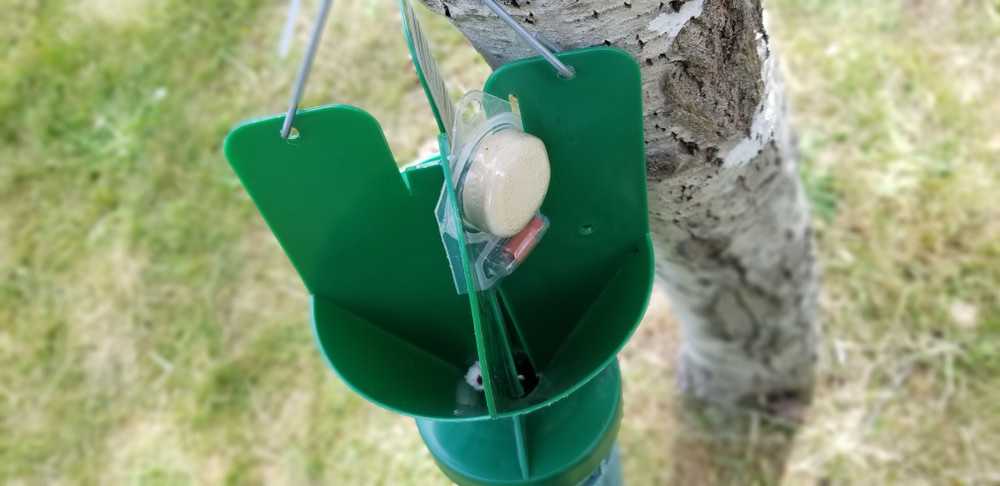
Japanese beetle traps are reportedly highly effective at luring the beetles away from your plants and trapping them so they can’t escape to breed or cause more damage.
This inexpensive trap available on Amazon has many five star reviews. You simply place the traps ten feet away from where the Japanese beetles are damaging most.
A food and sex attractant lures the beetles before they get trapped in a bag.
Empty the bag of trapped beetles into a bucket of soapy water to drown them and then if you have chickens, the dead beetles make great chicken feed.
This is the most effective Japanese beetle trap according to Amazon reviews.
2. Hand Pick
If it is early in the season and you just see a few bugs, you can actually handpick them right from your plants.
Drop them in soapy water to kill them.
Keep in mind that beetles are most active on warm days when the air is still. The best time to handpick is in the early morning or later evening.
3. Vacuum
Some people use a handheld vacuum to suck beetles from the plants. Be sure that you dump the beetles in soapy water to kill them after you have them collected in the vacuum.
4. Cedar Oil
I have used a cedar oil spray for years on my roses to keep Japanese beetles away. I recently found a recipe on how to make your own cedar oil and this works just as well as what I purchase at the store.
How to make it
Place 3 one foot long red cedar plants in a two-gallon bucket. Pour hot water on top of the plants and let them sit for 24 hours.
Be sure that the planks are completely covered.
You can cut them if you have to. Pour the liquid into a spray bottle and spray your plants liberally.
5. Diatomaceous Earth
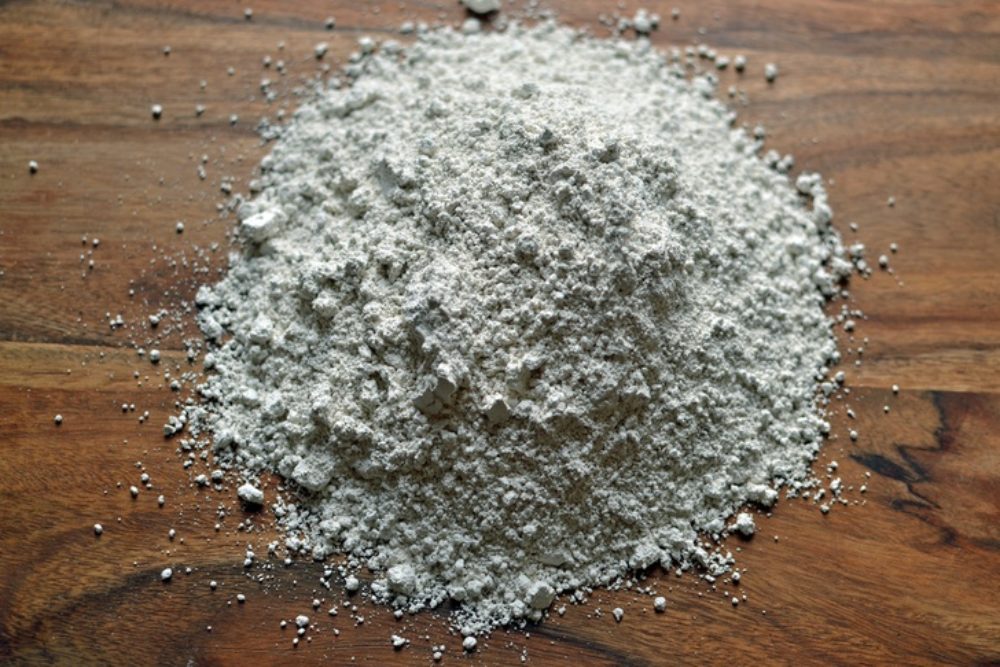
Diatomaceous earth (DE) is one of the best ways to kill Japanese beetles.
This white powder is made from the fossilized remains of very tiny aquatic organisms.
Sprinkle DE in the soil around your plants and the foliage wherever you see beetles. The powder gets under the shells and dehydrates the beetle.
This method also works great on ants, snail, and slugs. Use food grade DE only – such as this one available on Amazon.
6. Neem Oil
Although neem oil will not kill beetles immediately on contact, it will suffocate them over time.
It is a strong deterrent and also keeps other garden pests away such as leafhoppers, tomato hornworms, and grasshoppers. Spray plants often and liberally for best results.
You can also use neem oil as a systemic insecticide by diluting the oil in water and pouring it into the soil.
The oil will work its way into the plant tissue and beetles won’t like the taste of the foliage and will move on.
This Garden Essentials Neem Oil would work great.
7. Companion Planting
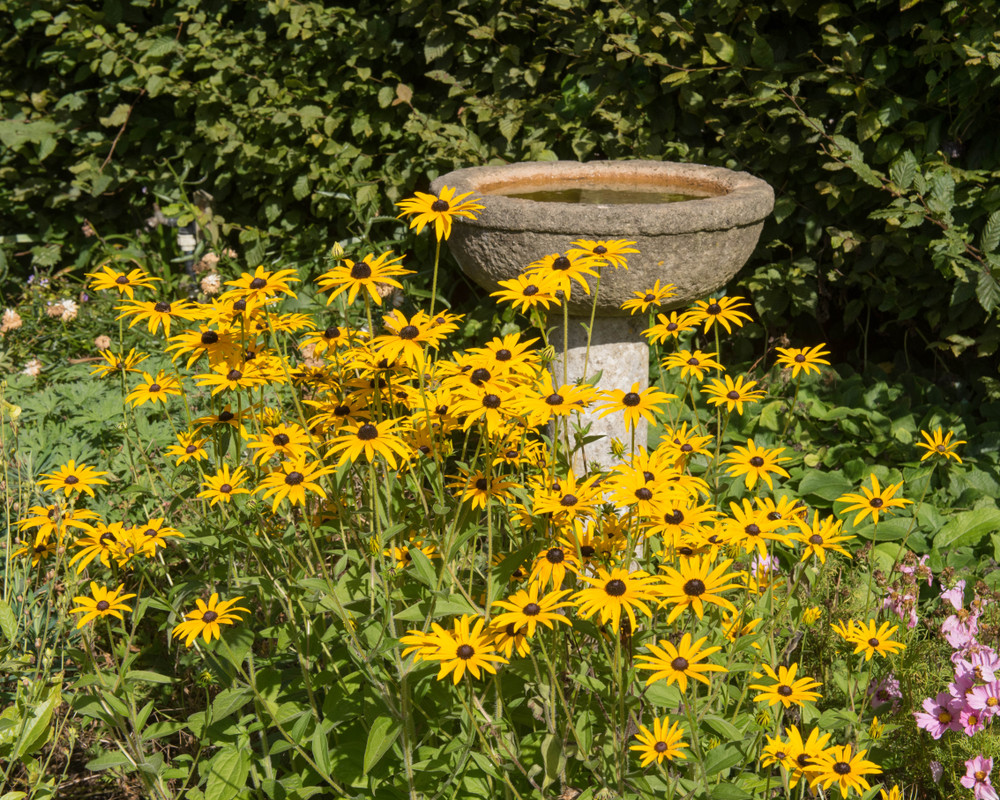
Companion planting is also an effective way to keep Japanese beetles away.
Some plants are even poisonous to the beetles such as white geraniums, rudbeckia, and 4 O’clocks.
Planting flower carpet yellow roses around your garden has also been reported to be an effective deterrent.
8. Plant Deep-Rooted Grass
Of course, the best way to deal with Japanese beetles is to get them before they become beetles.
Planting deep-rooted grass such as tall fescue that only requires one deep watering every seven days or so is one good way to stop grubs being attracted to your lawn.
This type of grass is also a lot less likely to show grub damage if it occurs.
9. Use Nematodes
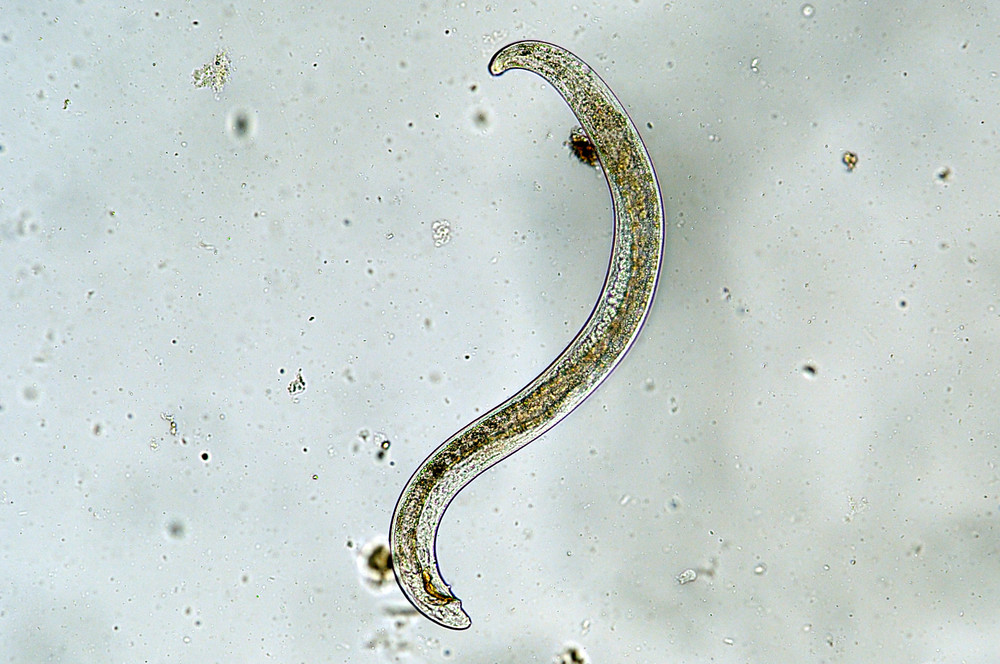
The best time to kill the grubs in your lawn without using dangerous chemicals is in the late summer or early fall when the new grubs are small.
Beneficial nematodes will kill 50%-75% of the grubs which will drastically minimize damage. Beneficial nematodes are microscopic worms that are found naturally in soil.
There are bad nematodes and good nematodes.
Bad nematodes eat the roots of plants while the good nematodes will attach themselves to grub larvae in the soil and suck all the life out of them.
Most soil is lacking in the good nematodes so apply a few early in the fall will help your lawn stay healthy and keep the number of grubs to a minimum.
You can buy ten million beneficial nematodes for insect pest control from this page on Amazon.
10. Plant The Right Plants

There are some plants that act as Japanese beetle host plants.
These are plants and trees that you should avoid growing if possible. There are other plants that deter Japanese beetles and planting these will help keep beetles away.
Some plants you should not grow
- Apple
- Apricots
- Asparagus
- Basil
- Butterfly bush
- Cherry
- Iris
- Marigold
- Morning glory
- Daylily
- Phlox
- Inpatients
- Willow
- Rose
- Thistle
- Virginia creeper
- Zinnia
- Japanese maple
- Wisteria
- Purple coneflower
Some plants and trees you should grow
- Yarrow
- Garlic, leek, and chives
- Columbine
- Begonia
- River birch
- Cabbage, kale
- Flowering dogwood
- Foxglove
- Fig
- Ash
- Gardenia
- Juniper
- Lantana
- Sweet pea
- Daisy
- Catmint
- Pany, violet
- Pear
